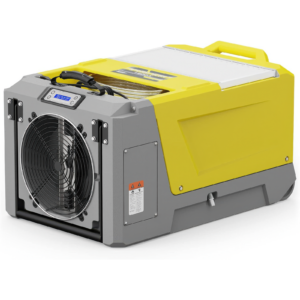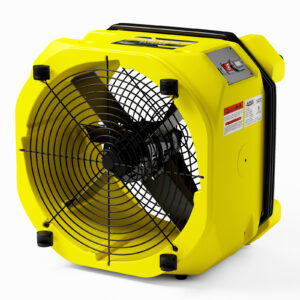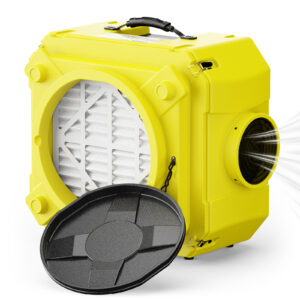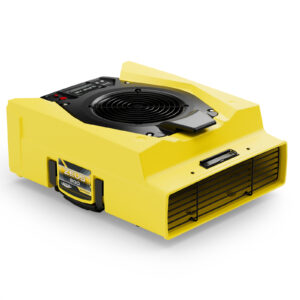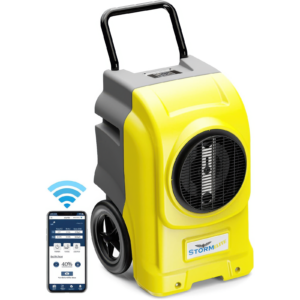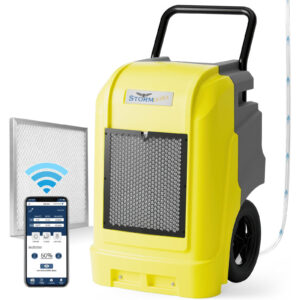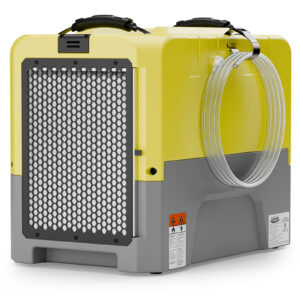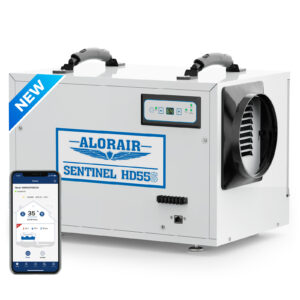Australia’s weather is variable, with humid summers, sudden downpours, and weeks of sweltering air. If you live in Sydney, Brisbane, or anywhere along the Australian coastline, you’ve probably felt this way before. It’s a gradual increase in indoor humidity that doesn’t go away on its own.
This climate wreaks havoc indoors. Not only is high humidity uncomfortable, but it can also lead to mould, warped wood, peeling paint, and flare-ups of asthma and allergies. The good news: You can control the air you live in. This article tells you how to know if your house is being eaten away by humidity.
How Humidity Can Harm Your Life
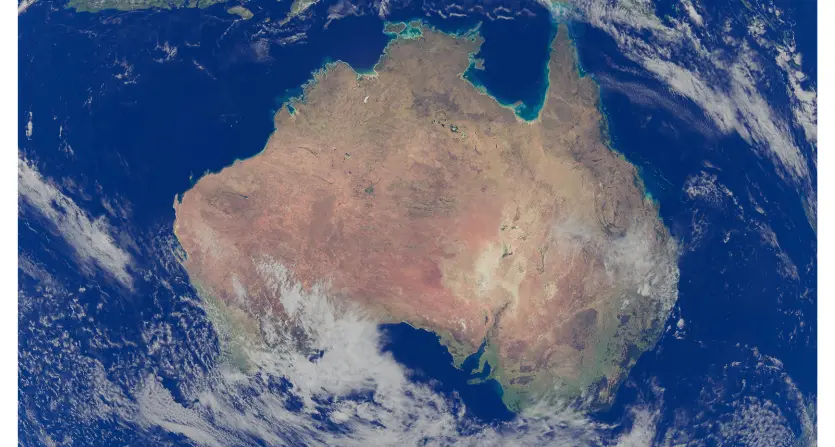
Think damp clothes that never quite dry. Walls that bubble and peel. Constant sniffles that mysteriously clear up whenever you leave home. These aren’t random annoyances—they’re signs that your indoor humidity is off the charts.
Australia’s climate doesn’t make it easy. Cities like Sydney, Brisbane, and Cairns regularly deal with humidity above 70% during the summer. In coastal areas, ocean air brings constant moisture inland. On the flip side, Melbourne or Adelaide might swing from bone-dry winters to soggy, storm-filled summers. It’s the classic weather in Australia scenario—hot and humid one week, dry and cold the next.
And humidity doesn’t just make you sweat. It fuels mould growth in your ceilings and wardrobes and behind your furniture. It warps floorboards, causes paint to blister, and triggers or worsens respiratory problems like asthma, sinusitis, and eczema. Your clothes? They’ll absorb the damp like a sponge and stink before you even wear them.
What Is the Ideal Indoor Humidity Level?
Comfort lives in the 45% to 55% relative humidity range. That’s the sweet spot. Not too dry, not too damp.
Drop below 30%, and the air starts pulling moisture out of your skin, lips, and throat. You’ll get static shocks and dry eyes. Go above 60%, and you invite mould spores, dust mites, and that thick, stale feeling in the air.
Here’s how it plays out across the country:
- Tropical north (e.g., Darwin, Cairns): Humidity often sits between 65% and 85%. Serious mould territory.
- Coastal east (e.g., Brisbane, Sydney): Swings between 50%–75% depending on season and rain.
- Southern dry zones (e.g., Adelaide, Melbourne): Winters are dry (often <30%), but summer storms push levels past 60%.
Your home’s needs change by season, so monitoring and managing indoor humidity year-round is non-negotiable.
How to Check Indoor Humidity (Tools & Methods)
You can’t fix what you can’t see—and when it comes to indoor humidity, accurate measurement is everything.
Digital Hygrometers
These pocket-sized devices are cheap, accurate, and super easy to use. For under $30, you can get a digital hygrometer to monitor humidity levels in key areas like the bedroom, laundry room, or basement. It’s a small investment with a big impact.
Smart Appliances
Modern appliances are getting smarter. Some air conditioners and premium air dehumidifier models now come with built-in humidity sensors. They display real-time humidity and automatically adjust their operation—perfect for hands-off comfort.
DIY Methods
Don’t have a device handy? Condensation on windows or cold drink glasses “sweating” indoors can suggest high humidity. While these are helpful hints, they’re not reliable enough for consistent control—use them as rough guides, not diagnostics.
Built-in Hygrometer in Dehumidifiers
If you’re looking for simplicity, the best dehumidifier models come with built-in hygrometers and auto modes. These units sense room conditions and kick in only when needed, helping you maintain the ideal 45%–55% range without constant adjustment.
Signs Your Indoor Humidity Might Be Too High (Even Without a Meter)
You don’t need fancy gear to know your air’s off. Here’s what your house will tell you:
- Peeling or bubbling paint, especially on exterior-facing walls
- Mould around windows, ceiling corners, or inside wardrobes
- Clothes smelling musty or staying damp hours after drying
- Floorboards lifting or feeling tacky under bare feet
- That sticky-skin sensation, even when it’s cool outside
- Frequent sinus congestion, itchy eyes, or coughing indoors
Sound familiar? Then blame the air. And, yep—it’s probably thanks to the weather Australia is throwing at your suburb this week.
How to Control Indoor Humidity Once You Detect a Problem
Use an Air Dehumidifier
This is the most efficient and reliable solution. A good air dehumidifier can extract liters of moisture from the air every day, especially in high-humidity zones like laundries, bathrooms, or coastal homes. Look for models with automatic humidity control to keep indoor levels steady without the guesswork.
Crack a Window (Strategically)
Ventilate during dry, cooler parts of the day—typically early mornings or evenings. On humid afternoons or rainy days (common with the ever-changing weather Australia brings), keep windows shut to avoid letting moisture in.

Add an Air Mover
An air mover increases airflow dramatically, speeding up drying times for wet floors, carpets, and laundry areas. They’re ideal for moisture-prone spots like under sinks, in basements, or after leaks.
Fix Leaks Fast
Check for hidden plumbing issues, roof leaks, or signs of rising damp from underneath the house. These can silently contribute to high humidity and long-term structural damage.
Monitor Plant Numbers
Too many indoor plants? They look great, but all that transpiration adds to your humidity load. Scale back or move them outdoors during wetter months.
Choosing the Best Dehumidifier for Your Home Size & Humidity Level
One size doesn’t fit all. Here’s how to shop smart:
Room Type | Recommended Model Type | Capacity Guide |
Bedroom / Wardrobe | Quiet, compact, energy-efficient | 10L–12L/day |
Laundry / Bathroom | High capacity with clothes-drying mode | 20L–25L/day |
Basement / Large Living Area | Commercial-grade with continuous drainage | 30L+/day + air mover built-in |
Look for features like:
- Built-in hygrometers and auto-shutoff
- HEPA filters for air purification
- Internal pumps or hose options for drainage
- Compatibility with air mover attachments in larger spaces
Need a model that ticks all the boxes? The Storm Elite 125L commercial dehumidifier is built for Aussie conditions—high airflow, heavy-duty extraction, and whisper-quiet performance.
Conclusion
Humidity isn’t just a seasonal nuisance – in most of Australia, it’s a year-round problem. It strikes when you’re not paying attention. Clothes don’t dry. Wardrobe smell. You sneeze more than usual.
Monitoring indoor humidity is easy. With the right gear, managing it is even easier. Whether you live in humid Brisbane or moody Melbourne, a smart air dehumidifier (paired with the occasional air mover) can help you achieve long-term comfort, cleaner air, and a mold-free home.



